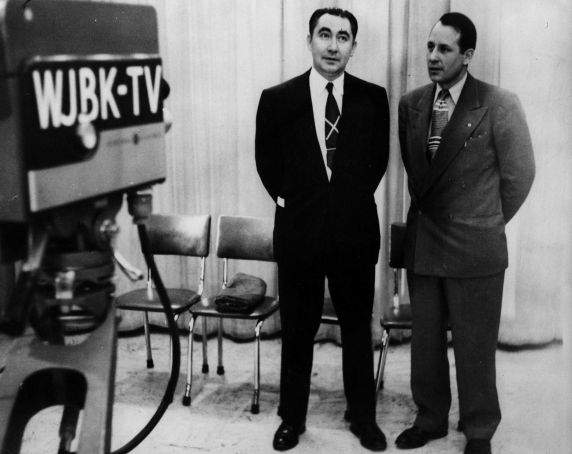(11515) Chrysler Strike, Telvesion Broadcast, WJBK-TV, Detroit, Michigan, 1950
Posted October 23rd, 2009 by eclemens
Emil Mazey, Secretary-Treasurer of the UAW, and Art Hughes, Assistant Director of Chrysler Department, prepare for a television newscast on WJBK-TV, a Detroit based CBS affiliate station, Detroit, Michigan. This was the first time the union used a television broadcast to explain the union’s point of view to a wider audience. On this occasion, the topic at hand was the 1950 Chrysler Strike.

Date:
March 19, 1950Physdesc:
PhotographPhotographer:
Unknown- Login to post comments
- Thumbnail
- Printer-friendly version

 Reddit
Reddit Facebook
Facebook LinkedIn
LinkedIn